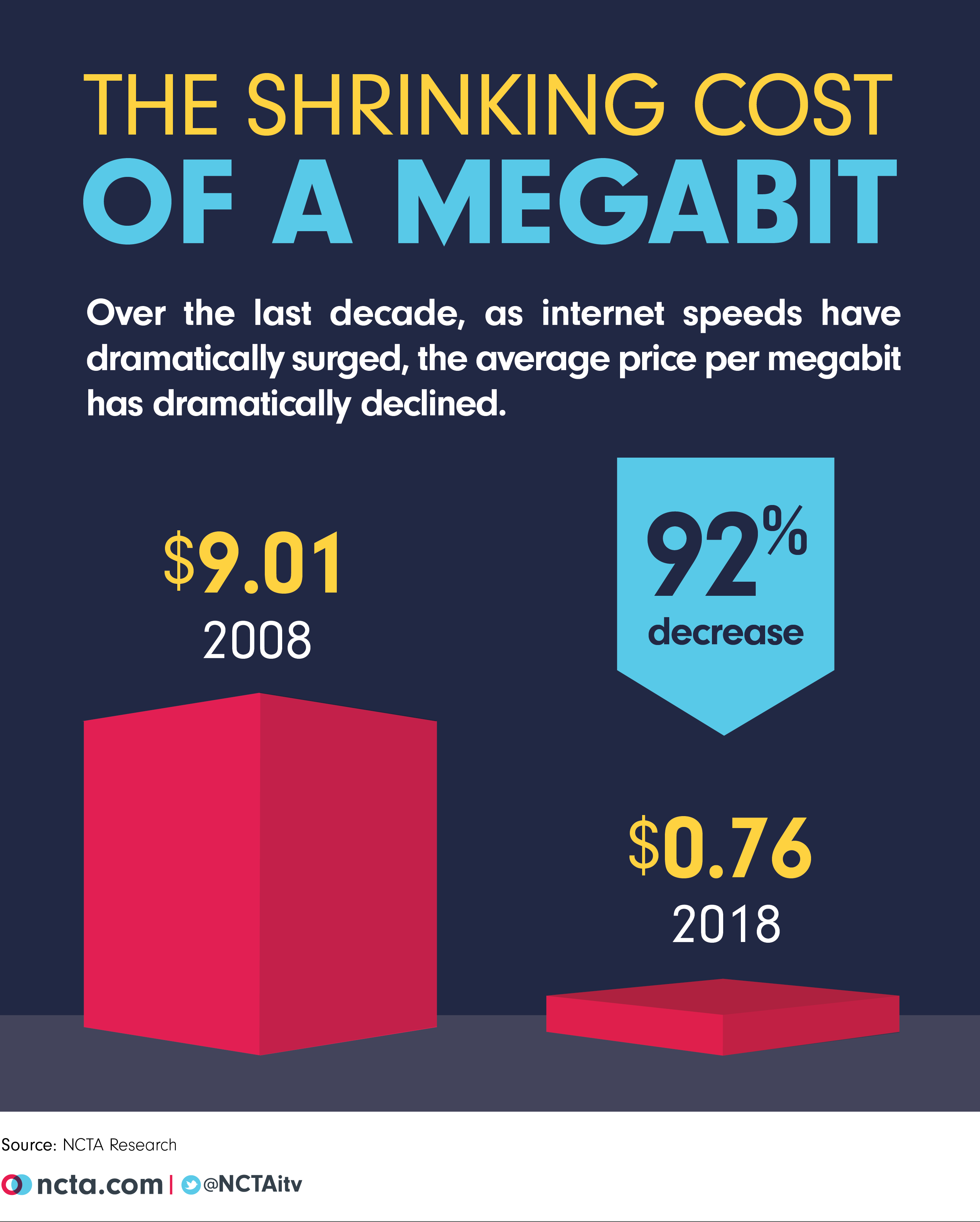Data. It’s at the heart of our daily lives and the modern economy. More data means higher quality streaming movies, it means richer more immersive online games, it means stronger long-distance relationships with loved ones, but it also means busier networks. In fact, Cisco predicts that in the U.S. alone, internet traffic will triple by 2022. That’s why earlier this year the global cable industry announced the 10G initiative—a powerful technology platform that will deliver 10 gigabit speeds to consumer homes in the coming years. That means networks will be ready for data-intensive services that have yet to be dreamed up, allowing imaginative innovation to flourish.
But 10G does not exist in a vacuum—it is the latest development in the long story of America’s internet leadership. As connection speeds have skyrocketed and allowed users to take advantage of data-intensive services like streaming video and gaming, the price per megabit per second has fallen. In 2008 consumers paid about $9.01 per Mbps, ten years later in 2018 that price was a miniscule $0.76 per Mbps. That 92 percent decrease is thanks to the billions of dollars the cable industry has invested to build and constantly update networks around the country.
So while we might not know what innovations a 10G network will foster, we do know that customers will continue to benefit from the shrinking cost of a megabit.

